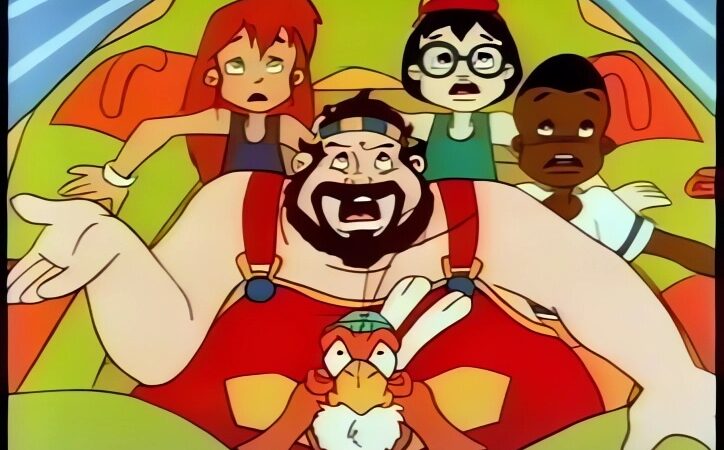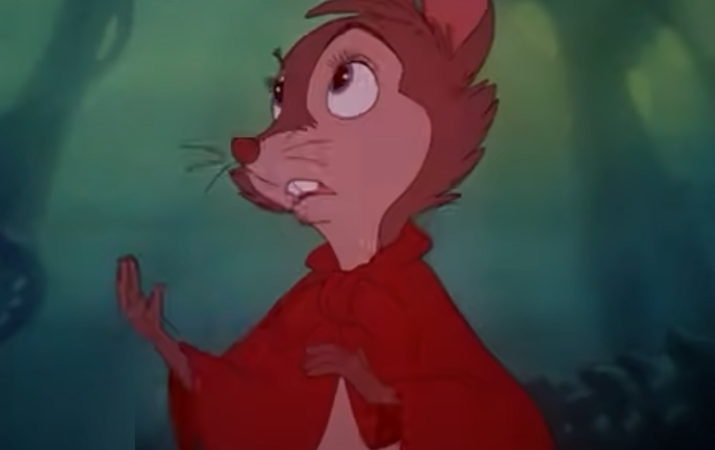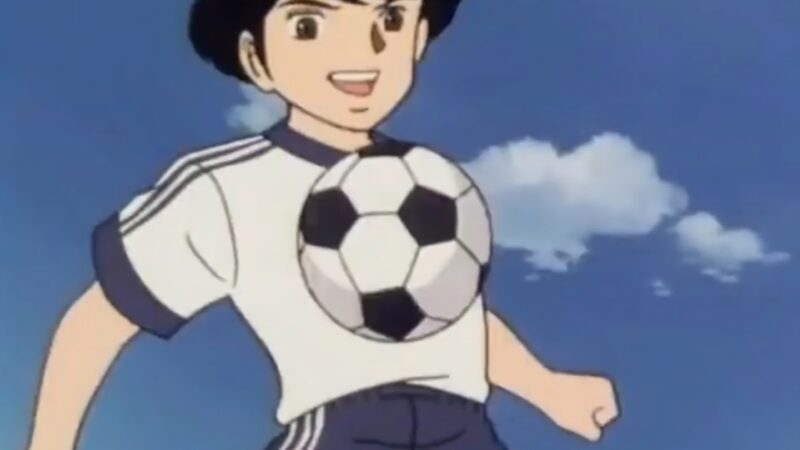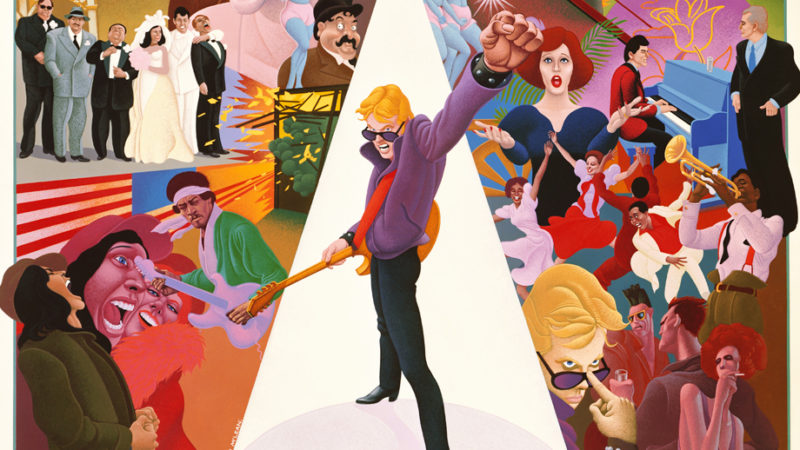Nausicaä of the Valley of the Wind - The 1984 anime film
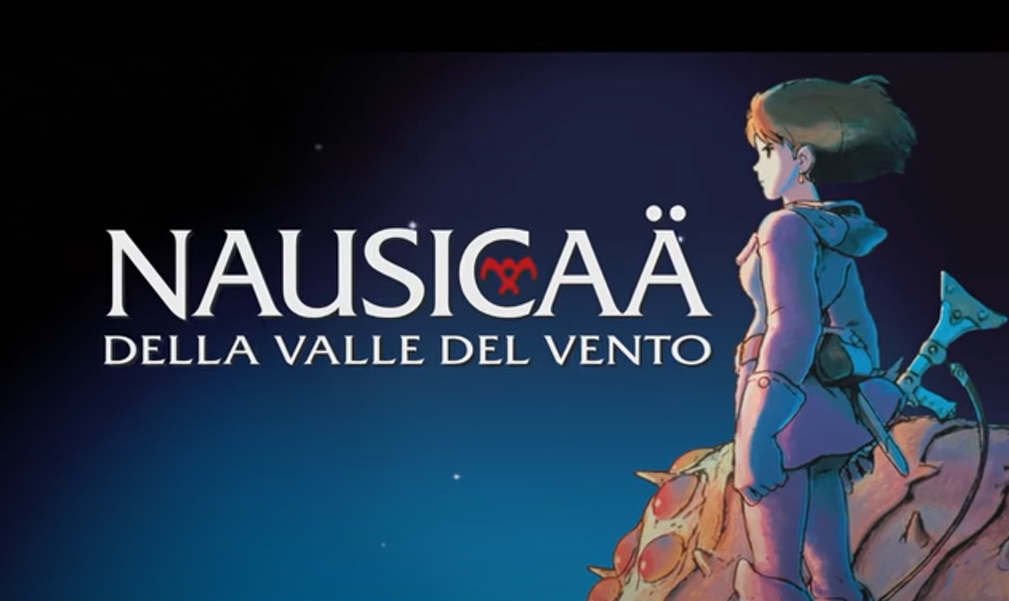
Nausicaä in the valley of the wind (in the Japanese original: 風 の 谷 の ナ ウ シ カ, Hepburn: Kaze no Tani no Naushika) is a 1984 Japanese animated (anime) film, written and directed by Hayao Miyazaki, based on his 1982 manga.
It was animated by Topcraft for Tokuma Shoten and Hakuhodo and distributed by the Toei Company. Joe Hisaishi, in his first collaboration with Miyazaki, composed the soundtrack. The film stars the voices of Sumi Shimamoto, Goro Naya, Yoji Matsuda, Yoshiko Sakakibara and Iemasa Kayumi.
Set in a future post-apocalyptic world, the film tells the story of Nausicaä (Shimamoto), the young princess of the Valley of the Wind. She becomes embroiled in a fight with Tolmekia, a kingdom that tries to use an ancient weapon to eradicate a jungle full of giant mutant insects.
Nausicaä in the valley of the wind was released in Japan on March 11, 1984. A heavily edited adaptation of Manson International's Warriors of the Wind was released in the US and other markets in the mid to late 80s.
The Manson cut was mocked by Miyazaki and was eventually replaced in circulation by an uncut and remade version produced by Walt Disney Pictures in 2005.
Although it was made prior to the founding of Studio Ghibli, it is often considered a Ghibli work and was released as part of the Studio Ghibli Collection's DVD and Blu-ray range.
The film received critical acclaim, with direct praise for the story, themes, characters and animation. It is the highest-scoring Japanese anime in a survey released by the Japanese Cultural Affairs Agency in 2007.
History

A thousand years have passed since the Seven Days of Fire, an apocalyptic war that destroyed civilization and created the vast toxic jungle, a poisonous forest teeming with giant mutant insects. In the kingdom of the Valley of the Wind, a prophecy foretells a savior "dressed in a blue robe, descending on a field of gold".
Nausicaä, the princess of the Valley of the Wind, explores the jungle and communicates with her creatures, including the giant armored Ohmu resembling a trilobite.
One day at dawn, a huge cargo plane from the kingdom of Tolmekia crashes in the Valley despite Nausicaä's attempt to save it. His only survivor, Princess Lastelle of Pejite, begs Nausicaä to destroy the cargo and dies.
The cargo is an embryo of a giant warrior, one of the lethal and gigantic humanoid biological weapons that caused the seven days of fire. Tolmekia, a military state, seized the embryo and Lastelle in Pejite, but their plane was attacked by insects and crashed.
One of the insects emerges injured from the wreck and prepares to attack, but Nausicaä uses a bullroarer to calm him and drive him away from the village.
Shortly thereafter, Tolmek's troops, led by Princess Kushana, invade the Vale, execute Nausicaä's father and capture the embryo. Enraged, Nausicaä assaults and kills several Tolmek soldiers and is about to be overwhelmed when the swordmaster of the Vale, Lord Yupa, calms the belligerents.
Kushana plans to mature the Giant Warrior and use him to burn the toxic jungle. Yupa discovers a secret garden of jungle plants raised by Nausicaä; according to his findings, plants growing in clean soil and water are not toxic, but the jungle soil has been contaminated with pollution.
Kushana leaves for the Tolmek capital with Nausicaä and five Vale hostages, but a pejite interceptor shoots down the Tolmek airships carrying them. Nausicaä, Kushana and the hostages rush into the jungle, disturbing several Ohmu, whom Nausicaä calms down.
He leaves the group to rescue the pilot Pejite Asbel, twin brother of Princess Lastelle, but they both crash through a layer of quicksand in a non-toxic area beneath the toxic jungle. Nausicaä realizes that jungle plants purify polluted soil, producing clean water and underground soil.



Nausicaä and Asbel return to Pejite but find it devastated by insects. A band of survivors explains that they have attracted the insects to eradicate the Tolmeks and are doing the same with the Vale. They capture Nausicaä to prevent her from warning the Vale, but with the help of Asbel, her mother and a number of sympathizers, Nausicaä escapes on her glider.
Flying home, he finds two Pejite soldiers luring thousands of Ohmus into the Vale using a small wounded Ohm. The people of the Vale take refuge as the Tolmekians deploy tanks and the Giant Warrior, but the fire of the tanks does not deter the Ohmu, and the Giant Warrior, born prematurely, disintegrates after killing only a fraction of the Ohmu.
Nausicaä fights the Pejite soldiers and frees little Ohm, earning his trust. Returning to the Vale, she and the Ohm find themselves in front of the herd, but are run over, fatally injuring Nausicaä. With the little Ohm back to them, the Ohmu calm down and use their golden tentacles to resurrect her.
Nausicaä, her Ohm blood-blue robe, walks atop golden Ohmu tentacles as if through golden fields, fulfilling the savior's prophecy. The Ohmu and Tolmekians leave the Vale and the Pejites stay with the people of the Vale, helping them rebuild. Deep in the toxic jungle, a non-toxic tree sprouts.
Production



Hayao Miyazaki made his 1979 directorial debut credited with The Castle of Cagliostro, a film that was a stark departure from the antics of the Lupine III franchise, but nevertheless received the Ofuji Noburo Award at the 1979 Mainichi Film Concours.
Although Cagliostro was not a box office success, Toshio Suzuki, editor of Animage magazine, was impressed with the film and encouraged Miyazaki to produce works for Animage publisher, Tokuma Shoten. Miyazaki's cinematic ideas were rejected and Tokuma asked him to make a manga: this led to the creation of Nausicaä of the Valley of the Wind.
Miyazaki began writing and drawing the manga in 1981, and it quickly became the most popular Animage film. Hideo Ogata and Yasuyoshi Tokuma, the founders of Animage and Tokuma Shoten respectively, encouraged Miyazaki to work on a film adaptation. Miyazaki initially refused, but agreed on the condition that he could direct.
In the early stages, Isao Takahata, credited as executive producer, reluctantly joined the project even before the animation studio was chosen.
An external studio was needed to produce the film because Tokuma Shoten did not own an animation studio: Miyazaki and Takahata chose the minor studio Topcraft.
The work of the production studio was known to both Miyazaki and Takahata and was chosen because his artistic talent could transpose the sophisticated vibe of the manga into the film.
On May 31, 1983, work began on the pre-production of the film. [10] Miyazaki ran into difficulties in creating the script, with only sixteen chapters of the manga to work on.
Miyazaki would take elements of the story and refocus the narrative and characters on the Tolmekian invasion of the homeland of Nausicaä. Takahata would have enlisted the experimental and minimalist composer Joe Hisaishi to compose the soundtrack for the film.
Animation work began on the film in August and was produced by animators hired and paid per frame. A notable animator was Hideaki Anno, a founding member of Gainax who among his later works wrote and directed Neon Genesis Evangelion.
Anno was assigned the task of drawing the challenging sequence of God Warrior's attack. According to Toshio Suzuki it is a "highlight of the film". The film was released in March 1984, with a production schedule of only nine months and with a budget equivalent to $ 1 million
Technical data



Original title Nausicaa of the valley of wind
Kaze no tani no Naushika
Original language Japanese
Country of Production Japan
Year 1984
Duration 117 min
Relationship Widescreen
Gender animation, science fiction, adventure
Regia Hayao Miyazaki
Subject Hayao Miyazaki
Film script Hayao Miyazaki, Kazunori Itō
Producer I
Executive producer Michio Kondou, Toru Hara, Yasuyoshi Tokuma
Production house Topcraft, Tokuma Shoten, Hakuhodo, Nibariki
Distribution in Italian Rai (1987 ed.), Lucky Red (2015 ed.)
Photography Hideshi Kyonen
Editor Naoki Kaneko, Tomoko Kida, Shōji Saka
Music Joe hisaishi
scenography Mitsuyoshi Nakamura
Art director Mitsuki Nakamura
Entertainers Kazuo Komatsubara
Original voice actors
Sumi Shimamoto: Nausicaa
Mahito Tsujimura: Jhil
Hisako Kyōda: Grand Dame
Goro Naya: Yupa
Ichirō Nagai: Myth
Kōhei Miyauchi: Goll
Jōji Yanami: Gikkuri
Minoru Yada: Niga
Rihoko Yoshida as Teto
Yoji Matsuda: Asbel
Mina Tominaga: Lastel
Yoshiko Sakakibara as Kushana
Iemasa Kayumi: Kurotwa
Italian voice actors
Original dub (1987)
Paola Del Bosco: Nausicaä
Gioacchino Maniscalco: Yupa
Piero Leri: Myth
Luca Ernesto Mellina: Goll
Mimmo Palmara: Gikkuri
Vittorio Guerrieri: Asbel
Romano Malaspina: Jihl
Norman Mozzato: Narrator
Re-dubbing (2015)
Letizia Ciampa: Nausicaa
Luciano De Ambrosis: Jhil
Franca Lumachi: The old grand lady
Angelo Nicotra: Yupa
Gerolamo Alchieri: Myth
Bruno Alessandro: Goll
Domenico Crescentini: Gikkuri
Silvio Anselmo: Niga
Valeria Vidali: Teto
Alessio De FilippisAsbel
Eva Padoan: Rastel
Laura RomanoKushana
Pino I teach: Kurotowa
Source: https://en.wikipedia.org/

